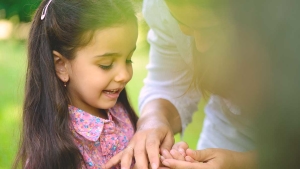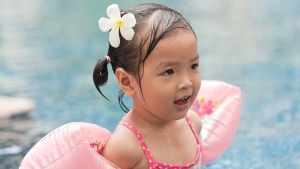10min read
-1.png?t=1683791949)
10min read
This safeguarding policy sets out Family Lives’ approach to safeguarding and in promoting the welfare of children and vulnerable adults. It applies to all areas of Family Lives’ work.
Family Lives recognises its responsibility to safeguard and promote the welfare of children and vulnerable adults within the legal framework of the Children Acts 1989 and 2004 and Care Act 2014. This includes children and vulnerable adults of any gender, ethnic background, sexuality, religion or with any disability.
As safeguarding underpins all the work of Family Lives, it is essential that we undertake our work within a robust safeguarding policy framework. Family Lives understands that safeguarding is the responsibility of everyone and therefore make safeguarding a priority throughout the organisation. We allocate resources to support this commitment and towards making Family Lives’ a safer organisation for all those associated with it. All staff and volunteers, who work directly (in person, on web or helpline) with adults and children receive safeguarding training as part of their induction which is appropriate to the nature of their role, and our training follows the Working Together to Safeguard Children (2018) statutory guidance.
Family Lives is committed to:
Family Lives staff and volunteers will be properly supported to ensure safeguarding. They will never act alone and will always receive support, regular professional development and DBS checks.
Family Lives staff and volunteers working in other settings must be fully trained in the setting’s safeguarding policy and procedures and must know the named Designated Safeguarding Lead within the setting. Our own Designated Safeguarding Leads assure that the safeguarding policies of the setting align with those of Family Lives.
Recruitment:
Full details of the recruitment process can be found in the Family Lives Recruitment and Selection Policy.
Staff:
The application of rigorous procedures for the recruitment of any staff who are in contact with vulnerable adults and children, both directly and indirectly, can reduce the likelihood of any complaints or allegations of abuse. As an absolute minimum, we adhere to the following standards:
Volunteers:
We apply rigorous procedures and processes for recruitment of all volunteers who are in contact with vulnerable adults and children, both directly and indirectly, to reduce the likelihood of any complaints or allegations of abuse. As an absolute minimum, these types of volunteers must: :
These required standards apply to every volunteer who may come in to contact with vulnerable adults and children. They are fully discussed as part of the volunteer recruitment and induction process.
Training:
Introduction to the Safeguarding Policy and Procedure is part of the induction process for staff and volunteers.
Staff Child Protection training is monitored by Designated Safeguarding Leads. and updated as guidelines and laws change. It is fully reviewed every three years. We follow local authorities and Local Safeguarding Board guidelines and protocols in the areas in which we work.
Internal safeguarding training is delivered every 2 years, and the Designated Safeguarding Leads are responsible for keeping the training material up to date.
The knowledge and skills of the Designated Safeguarding Leads are refreshed regularly. And there are always appropriately trained managers available for staff to express concerns.
Supervision:
Monitoring and practice development support are provided to comply with Family Lives’ expectations and standards. This happens via regular supervision, debriefs and volunteer reviews.
All staff and volunteers are required to become familiar with the Safeguarding policy and Risk of Harm reporting procedures. It is the responsibility of the Line Manager to identify and provide suitable training opportunities for staff and volunteers to ensure they can identify and address child protection and vulnerable adult issues within all Family Lives services and projects. This process is continuous, regular and responsive to emerging needs.
There are opportunities to debrief following a difficult call/visit when working with families with complex needs where safeguarding issues have been identified.
These guidelines are for the use of all staff, volunteers, and service users.
All safeguarding protection concerns must be actioned within the same working day unless there are exceptional circumstances. If there is a concern that a child or adult might be at risk or is suffering significant harm, abuse or neglect, it should be reported as soon as possible to a Supervisor, Manager or On Call Rota Manager as outlined in the Risk of Harm Procedure. These concerns include ones that may arise in digital settings. In local projects where we are working as part of a multi-agency team, a new or arising risk will be reported directly to the relevant professional or safeguarding team.
Digital safeguarding refers to the safeguarding policies, procedures and practices relating to online spaces. The same safeguarding principles apply to Family Lives programmes and activities, whether these take place digitally or physically.
Our Digital Policy describes the consideration we give to all safeguarding needs in these settings. It also gives guidance on the use of social media and digital platforms by all staff and volunteers.
Referral of digital safeguarding concerns
Safeguarding Leads provide support to staff and volunteers to prevent and respond to digital safeguarding concerns. They raise awareness, conduct training and promote best practices, as well as receiving concerns, conducting referrals to specialised services and supporting investigations, where needed.
All Family Lives staff and volunteers are required to report any digital safeguarding suspicions or incidences following the Risk of Harm Procedure. Failure to report these to a relevant person is a breach of Family Lives’ policy and could lead to disciplinary action being taken against employees and the termination of Family Lives relationship with non-employees.
This Family Lives safeguarding policy applies in all settings. We ensure that all staff engaging with service users have current Child Protection training. All reports are submitted via the Risk of Harm procedure with an on-line form completed for each incident whether it has been reported externally or not. All safeguarding concerns raised by service users under 18, any generated via local services and any resulting in an external referral require sign off from an On Call Manager.
It is a requirement of some of our projects to follow Local Authorities and Local Safeguarding Board guidelines and protocols. Family Lives staff and volunteers working in such settings must be trained in the setting’s safeguarding policy and procedures and must know the named Designated Safeguarding Lead within the setting. Our own Designated Safeguarding Lead assures that the safeguarding policies of the setting align with those of Family Lives. Reference should also be made to our Personal Safety and Lone Working Guidelines.
We recognise that there are different safeguarding policies and procedures in Wales and we follow Welsh guidelines when working there.
Parental Consent
Family Lives recognises that children and young people can be actively involved in ensuring their own safety. Young people will input into the planning of any day trips/activities and in particular the ground rules for any such activity.
However, Family Lives has set the following parameters when working with children and young people:
Insurance
Family Lives hold appropriate insurance for public liability and professional indemnity. Parents and young people will be advised that they require their own insurance for the purposes of personal accident and personal property.
Practitioners that work with, or are in contact with children, young people and vulnerable adults need to be aware of the possibility that allegations of abuse may be made against them. All staff and volunteers should take care not to be put into a vulnerable position with a child and should work with individual adults or children in view of others.
Staff and volunteers must bring any allegation made to a Designated Safeguarding Lead who will immediately, ideally within a working day unless there are exceptional circumstances, inform Human Resources. In cases where the allegation made is against a DSL, the complainant should approach the Chief Executive.
All incidents will be internally investigated after any external investigation has been completed. This is to review organisational practice and put in place any additional measures to prevent a similar thing happening again.
All service users should be reminded of our confidentiality policy if disclosing any safeguarding concern. All safeguarding issues, whether externally reported or not, should be recorded as outlined in our Risk of Harm Procedure. The online Risk of Harm form should be fully completed. Reports should be factual, concise and objective. We recognise that handling disclosures, discussing abuse or any other safeguarding issue can be challenging, and so careful reporting is essential.
The Designated Safeguarding Lead analyses the records and presents a Risk of Harm report to each Trustees board meeting which gives a comprehensive record of all incidents. It is also used to inform practice and direct policy.
Primary legislation
Secondary legislation
Non-Statutory Guidance
Designated Safeguarding Leads
To take overall responsibility for safeguarding procedures as well as regularly producing the Risk of Harm Report.
Managers
Staff and Volunteers
We recognise that many children, young people and vulnerable adults are the victims of different kinds of maltreatment. These may include abusive acts by parents, family members, peers, known adults or strangers.
Maltreatment of children can occur when parents or others with caring responsibilities fail to take appropriate protective action, resulting in a child suffering from neglect or maltreatment by others. Child maltreatment can result from or be aggravated by psycho-social and relationship factors that have an adverse impact upon the lives of adults and children in a family – including domestic violence, substance misuse, bullying, child sexual exploitation, racist abuse or ritualistic practices that are abusive.
The characteristics of abuse can take a number of forms and cause victims to suffer pain, fear, anxiety and distress reaching well beyond the time of the actual incident(s). Victims may be too afraid or embarrassed to raise any complaint. They may be reluctant to discuss their concerns with others or unsure who to trust or approach with their concerns. We know that there are some situations where victims are unknowingly exploited or unaware that they are victims of abuse or have difficulty in communicating this information to others.
Family Lives commitment to safeguarding and promoting the welfare of young people and vulnerable adults seeks, through its services, to create a safe and emotionally healthy environment within which children, young people and vulnerable adults can thrive and work with the security of clear guidance.
A child is as defined as anyone under the age of 18.
A Vulnerable Adult is as defined in accordance with the Care Act 2014 and Rehabilitation of Offenders Act 1974 (Exceptions) (Amendments) Order 2002 as a person aged 18 or above including:
With respect to the role of Family Lives, an adult may also be termed ‘vulnerable’ for a short period, usually at a time of crisis or particular stress due to a life event or recur as a result of stressful events or relationship difficulties, or while under the influence of substances or coercion.
This may include a person who:
Recognising signs of abuse
It can often be difficult to recognise abuse. The signs listed in this policy are only indicators and many can have reasonable explanations. Children may behave strangely or seem unhappy for many reasons, as they move through the stages of childhood or their family’s experience changes. It is nevertheless important to know what could indicate that abuse is taking place and to be alert to the need to consult further. There is sometimes a crossover between the types of abuse and the resultant symptoms and behaviours that lead to abuse being recognised. Children may suffer from a single form of abuse, but usually there will be more than one type of maltreatment resulting in the child suffering different forms of significant harm expressed by different symptoms. Someone can abuse a child by actively inflicting harm or by failing to act to prevent harm.
For Vulnerable Adults, abuse is often a violation of an individuals’ human and civil rights by any other person or persons. It can take a number of forms:
Abuse can take place within a family, institutional or community setting and via social media. Perpetrators can be family members, a known adult, carer, professional partner, stranger, a young person or child.
Physical Abuse
Physical abuse can involve hitting, shaking, throwing, poisoning, burning, scalding, drowning, and suffocating. It can also result when a parent or carer deliberately causes the ill health of a child to seek attention; called fabricated illness or Munchhausen’s Syndrome by Proxy. Some families or cultures may believe physical chastisement is not only acceptable but desirable. Symptoms that may indicate physical abuse include:
Psychological or emotional abuse
Psychological or emotional abuse sometimes co-exists with other forms of abuse. Emotionally abusive behaviour (which sometimes amounts to emotional cruelty) occurs if a parent, carer or authority figure is consistently hostile, rejecting, threatening or undermining. It can also result when children or adults are prevented from social contact with others, or if developmentally inappropriate expectations are imposed. It may involve seeing or hearing the ill-treatment of someone else. Symptoms that may indicate emotional abuse include:
Physical and/or emotional neglect
Neglect is the persistent failure to meet a child’s or vulnerable adult’s basic physical and/or psychological needs, causing damage to their health and development. It may involve a parent or carer failing to provide adequate food, shelter or clothing, or protect them from harm or danger, or failing to access appropriate medical care and treatment when necessary. Emotional neglect happens when a child’s need for love, security, praise and recognition is unmet. This may occur if a parent is psychologically unavailable because of stresses on the parent or circumstances affecting parenting such as addictions or domestic abuse. It can exist in isolation or in combination with other forms of abuse. Symptoms of physical and emotional neglect can include:
Sexual Abuse
Sexual abuse involves forcing or enticing a child, young person or vulnerable adult to participate in sexual activities, whether or not they are aware of what is happening. This may include physical contact, both penetrative and non-penetrative, or involve no contact, such as watching sexual activities or looking at pornographic material. Encouraging children to act in sexually inappropriate ways is also abusive. Under the Sexual Offences Act 2003, any sexual activity –contact or non-contact – with a child under the age of 13, is a crime. Symptoms of sexual abuse may include:
Older children, young people and vulnerable adults may additionally exhibit:
Suicide
Some adults and children that access our services have suicidal feelings. Be aware that there may also be children that an adult with suicidal feelings may be caring for and there could be a child protection issue. Follow the guidance on suicide in the Risk of Harm procedure, involving a supervisor and On Call Rota Manager
Any mention of suicidal thoughts should be noted, and the person listened to carefully. It is a myth that if someone talks about suicide they will not do it.
If a parent discloses a child is expressing suicidal thoughts: parents should be encouraged to listen carefully to what their child is saying and consult their GP.
Suicidal risk indicators vary with each individual’s circumstance and may be health, historic or socially related. This may include family history of suicide, childhood abuse, neglect or trauma; previous suicide attempt; mental health conditions; family break-up, bereavement; violence within the family; being subjected to bullying or personally undermined by peers or adults.
Self-harm
If a parent discloses a child is self-harming, parents should be encouraged to listen carefully to what their child is saying and consult their GP or emergency services as appropriate. This may include deliberately taking overdoses of drugs or swallowing other substances. Burning oneself with, for example, flames, heated metal, wax or chemicals. Hitting or banging one's arms, legs or head on walls, or with fists or objects.
The Prevent Duty
Prevent is the multi-agency set of arrangements aimed at preventing individuals and groups from engaging in violent extremism. Family Lives is committed to co-operate and works collaboratively with a multi-agency approach.
Parents and carers should be involved in discussion about any extremism concerns at the earliest point possible unless this would increase risk to a child or young person or increase the risk of a crime being committed in the immediate future.
What could be signs of possible radicalisation?
There may be a number of signs that a young person or vulnerable adult may be being radicalised which could include:
What to do if you have a concern
If you have a concern about a particular young person/adult you will follow the normal safeguarding procedures, including discussing with the designated safeguarding lead, and where deemed necessary, the relevant local Authority children’s social care team. In Prevent priority areas, the local authority will have a Prevent lead and you or the parent/carer can discuss concerns with the local Safeguarding Team. You can also contact the local police 999 force or dial 101 (the non-emergency number). They will talk in confidence about any concerns and help you gain access to support and advice.
The Department for Education has dedicated a telephone helpline (020 7340 7264) to enable schools to raise concerns relating to a young person’s extremism directly, or by email to counter.extremism@education.gsi.gov.uk. Please note that the DfE helpline is not intended for use in emergencies, such as a child being at immediate risk of harm or a security incident, in which case the normal emergency procedures should be followed. Any worker who believes a crime is being committed, or planned, or is aware of any terrorist activity, should contact the Police immediately. Other referrals should be direct made to Social Services Safeguarding team.
Child Sexual Exploitation
Child sexual exploitation (CSE) is a type of sexual abuse in which children become sexually exploited for money, power or status. Children or young people may be tricked into believing they are in a loving, consensual relationship or given drugs and alcohol in order to perform sexual acts. Children are also at risk to online grooming. Some children and young people are trafficked into or within the UK for the purpose of sexual exploitation. Sexual exploitation can also happen to young people as part of the initiation into gangs.
Indicators of potential child sexual exploitation:
Forced Marriages
No faith supports the idea of forcing someone to marry without consent and should not be confused with arranged marriages between consenting adults.
Under-age Marriages
In The United Kingdom, a young person cannot legally marry until the age of 18 or have a sexual relationship until they are 16 years old or older
Female Genital Mutilation
This is against the law yet we know that for some communities it remains a religious act and a cultural requirement. It is also illegal for someone to arrange for a child to go abroad with the intention of having her circumcised.
Ritualistic Abuse
Some faiths believe that spirits and demons can possess people (including children). We would never condone the use of any physical violence to get rid of any possessing spirit. This is physical abuse and we will report perpetrators even if it was their intention to help the child.
Other forms of abus
We recognise that the list above is not exhaustive and other forms of abuse may occur in different settings.
There are specific considerations to consider with online initiatives, as digital technology has brought about new safeguarding issues. For example, perpetrators of exploitation, abuse and harassment can hide behind fake photos and profiles, and the online disinhibition effect leads to the proliferation of trolling and cyberbullying. Images, videos and texts can be sent easily to large groups of people, and once images or data have been shared digitally, it is almost impossible to delete or recall them.
Content risks
Risks that are produced because of the material that people can access online. People may be exposed to this content actively or passively, and it may produce a harmful effect. Content may be illegal to possess or share according to national law, e.g. sexually exploitative images of children or radicalising videos. Inappropriate and offensive content is more subjective, and includes commercial adverts or spam; violent, extremist or hateful material; sexually exploitative or sexual material; and content which is discriminatory based on someone’s race, ethnicity, age, sex and gender identity/expression, sexual orientation, (dis)ability, religion, or other status.
Contact risks
Risks that are produced because of others’ online behaviour. Individuals may have information about them shared or may be engaged in ways which lead to harmful consequences. The types of behaviour which people may experience include:
Conduct risks
Risks that are produced because of people’s own online behaviour, which may put themselves and others at risk. People may download something illegally, bully, harass or exploit others, unintentionally reveal their location, create and upload sexual material or sext (send someone sexually explicit photographs or messages via mobile phone).
The seven golden rules to sharing information
Family Lives encourages staff and volunteers to acknowledge their responsibility to bring matters of concern about the practice of a member of staff or volunteer to the attention of the Chief Executive using the internal reporting procedure. Although this can be difficult, this is particularly important where the welfare of young people or vulnerable adults may be at risk. Where concerns may involve the Chief Executive, practitioners should report to Eluned Harries, the Safeguarding Trustee. Any disclosure will be taken seriously and addressed in confidence.
-1.png?t=1683791949)
-1.png?t=1683791981)
Download our infographic to help you build the resilience and emotional health in your children, with practical tips and guidance.




6-1.png?t=1711447526)

6-1.png?t=1711447049)
4-1.png?t=1711446482)

5-1.png?t=1711446634)
3-1.png?t=1711446750)
2-1.png?t=1674467612)
2-1.png?t=1669807700)
1-1.png?t=1669808541)

2-1.png?t=1711355578)
.png?t=1636982651)
.png?t=1636982657)
2-1.png?t=1688554465)
2-1.png?t=1711355578)